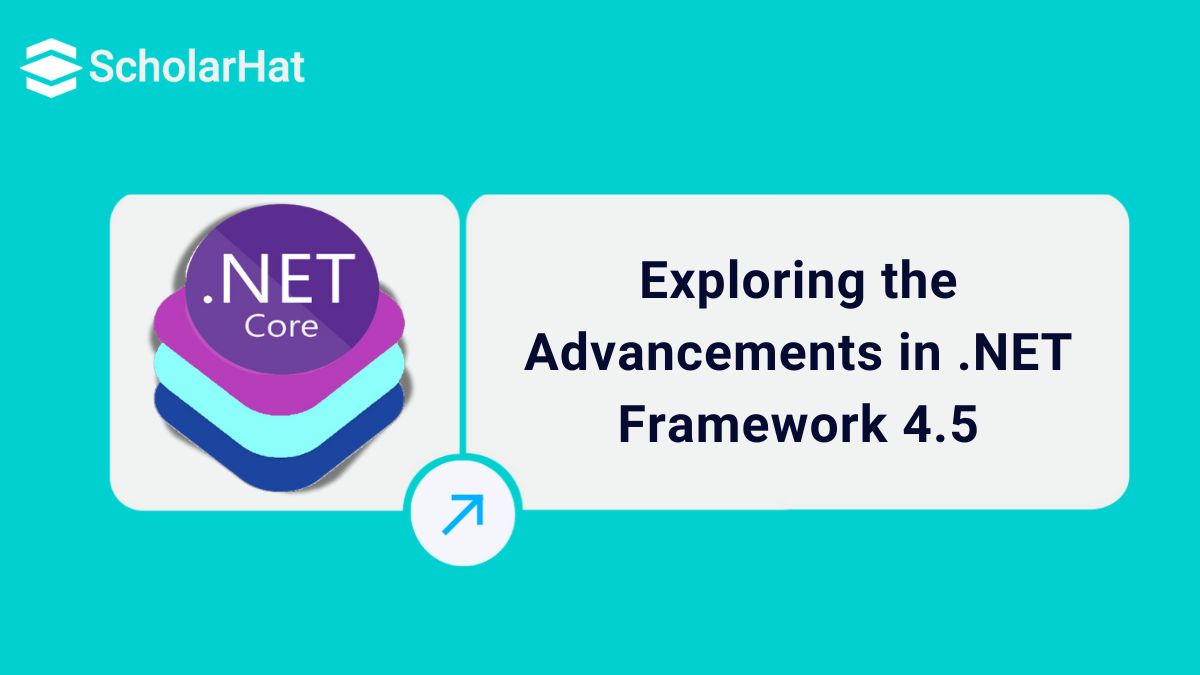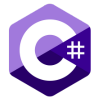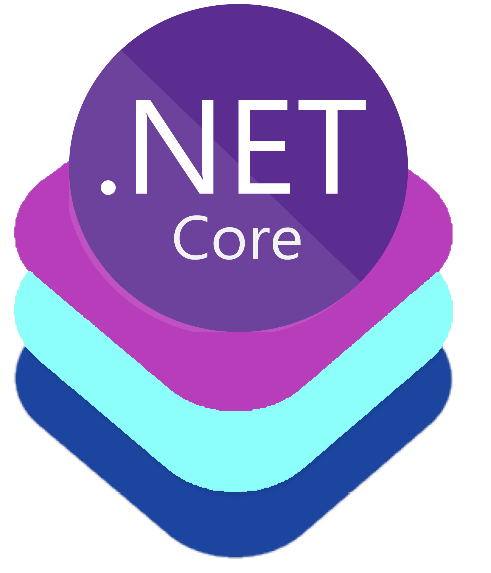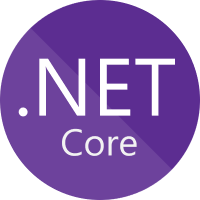Understanding .Net Framework 4.5 Architecture
The .NET Framework is an integrated component of the Windows operating system that supports the development and execution of next-generation applications, Windows Store apps, and services. At its core, .NET Framework 4.5 consists of Common Language Runtime (CLR), Dynamic Language Runtime (DLR), Base Class Library (BCL), Portable Class Library, Parallel Extension, and WinRT.
With .NET Framework 4.0, BCL has various new additions, including DLR, MEF, Parallel Extension, Entity Framework, and WCF Data Services. It also allows you to host the .NET 4 runtime with the .NET 3.5, 3.0, and 2.0 runtimes side by side under the same hosting process.
In the .NET Tutorial, we will examine how the .NET Framework 4.5 has added new features and made some improvements compared to the older versions.
Components of .NET Framework 4.5 Architecture
The .NET Framework 4.5 has components like CLR, BCL, and ASP.NET, which help run and manage applications smoothly.

1. Common Language Runtime
The Common Language Runtime (CLR) is a key part of the .NET Framework 4.5 that runs and manages applications. It helps with memory management, error handling, and security. The .NET Framework 4.5 uses CLR to make sure programs run smoothly and safely.
- This acts as the execution engine for the .NET Framework. All .NET programs are executed under the supervision of the CLR.
- The CLR helps a lot with codebase management. Code that targets the runtime is called managed code, while code that doesn't is called unmanaged code.
2. Base Class Library
The Base Class Library (BCL) in .NET Framework 4.5 is a collection of ready-made code that helps you do everyday tasks like reading files, working with data, or showing messages. With .NET Framework 4.5, BCL makes coding easier by saving time and effort.
- This is a library of functionalities that are available to all languages using the .NET Framework. It consists of classes and interfaces of reusable types that integrate with the CLR.
- In other words, the .NET Framework also includes a collection of standard base class libraries, which are collections of methods and functions that can be used for the core purpose, such as namespaces.
3. Portable Class Library
The Portable Class Library project in Visual Studio 2012 allows you to develop and build managed assemblies that work on multiple .NET Framework platforms. Using a Portable Class Library project, you choose the platforms (such as Windows Phone and .NET for Windows Store apps) to target.
- The Portable Class Library (PCL)lets you write code that works on different .NET platforms, such as Windows, mobile, and web.
- It helps you reuse the same code across apps using the .NET Framework 4.5 and other .NET versions.
4. Managed Extensibility Framework (MEF)
MEF is a library for creating lightweight, extensible applications. It allows application developers to discover and use extensions without requiring configuration.
- Managed Extensibility Framework (MEF) helps developers easily add new features to their apps without changing the main code.
- It is used in .NET Framework 4.5 to support plugins and make applications more flexible and extensible.
5. Dynamic Language Runtime
Dynamic Language Runtime provides the runtime environment for dynamic languages like Python, etc., for executing under the complete control of the CLR.
- Dynamic Language Runtime (DLR) in .NET Framework 4.5 allows dynamic languages like Python and Ruby to run on the .NET platform.
- DLR makes it easier to add, use, and work with dynamic types in .NET Framework 4.5 applications.
6. WinRT
WinRT or Windows Runtime APIs provide the user interface elements for building Windows Store apps and provide access to Windows 8 or Windows RT OS features. WinRT supports development in C and other managed languages, such as C# and VB.NET, as well as JavaScript and TypeScript.
- WinRT (Windows Runtime) is a platform in the .NET Framework 4.5 used to build Windows Store apps with modern user interfaces.
- WinRT allows apps to run smoothly across different Windows devices like PCs, tablets, and phones.
7. ASP.NET
ASP.NET is used to build rich internet-based web applications. The .NET web application runs on a server with Internet Information Services (IIS) installed. IIS processes the application, sends the result to the client, and displays the output in the user's browser.
- ASP.NET in .NET Framework 4.5 is used to build dynamic and interactive web applications.
- ASP.NET supports server-side processing, making websites faster, more secure, and easier to manage.
8. Windows Store Apps (Metro Style Apps)
A Windows Store app is a new type of application that runs on Windows 8 devices and can take advantage of new WinRT APIs. These can only be distributed in the Windows 8 store.
- Windows Store Apps (Metro Style Apps) in .NET Framework 4.5 are designed for touch-friendly and modern user experiences on Windows devices.
- These apps run in a sandboxed environment, making them secure and ideal for distribution through the Windows Store.
A Windows Desktop app is a traditional Windows Forms application with a new name. Software developed for Windows XP, Windows Vista, and Windows 7 will be categorized as a Windows Desktop app when running on Windows 8. Examples of Windows Desktop apps are Microsoft Office family products, notepads, etc.
- Desktop Apps (Windows Forms) in .NET Framework 4.5 are used to create rich, user-friendly applications for Windows desktops.
- Windows Forms provides built-in tools and controls to quickly design and build graphical user interfaces.
10. WPF
WPF is used to create applications with a rich user experience. It includes application UI, 2D graphics, 3D graphics, and multimedia. It takes advantage of the hardware acceleration of modern graphics cards. WPF makes the UI faster, scalable, and resolution-independent.
- WPF (Windows Presentation Foundation) in .NET Framework 4.5 is used to create visually stunning desktop applications with advanced graphics and media support.
- WPF allows developers to build rich, interactive UIs with data binding, animations, and 3D graphics for a seamless user experience.
11. Silver Light
Silver Light is a cross-browser web-based technology that allows designers and developers to deliver Rich Internet Applications (RIA) embedded in Web pages.
- Silverlight in .NET Framework 4.5 is a framework for building interactive web applications with rich media, graphics, and animations.
- It allows developers to create cross-platform web apps, though its use has been phased out in favor of modern web technologies like HTML5.
12. ADO.NET
This is used to create a Data Access Layer to query and manipulate data from underlying data sources like SQL Server, Oracle, DB2, etc.
- ADO.NET in .NET Framework 4.5 is used to connect to databases and retrieve and manipulate data in applications.
- ADO.NET provides a set of classes for handling data operations and ensures fast and efficient data access in web and desktop applications.
13. LINQ
This allows you to query the data from various data sources (like SQL databases, XML documents, ADO.NET Datasets, Various Web services, and any other objects such as Collections, Generics, etc.) using a SQL Query syntax with .NET framework languages like C# and VB.
- LINQ (Language Integrated Query) in .NET Framework 4.5 allows developers to query data from different sources like databases, arrays, and XML using simple, readable syntax.
- LINQ integrates query capabilities directly into C# and VB.NET, making it easier to work with data in a more efficient and declarative way.
14. ADO.NET Entity Framework
ADO.NET Entity Framework is used to query and store data in relational databases (like SQL Server, Oracle, DB2, etc.) in an ORM fashion.
- ADO.NET Entity Framework in .NET Framework 4.5 simplifies database interactions by allowing developers to work with data using objects instead of SQL queries.
- It provides an object-relational mapping (ORM) layer, making it easier to query and manipulate data from a database in a more intuitive and object-oriented manner.
15. Parallel Extension
Parallel Extension allows you to distribute your work code across multiple processors to take advantage of the hardware.
- Parallel Extensions in .NET Framework 4.5 enable developers to write parallel and asynchronous code, improving the performance of multi-core processors.
- It provides APIs like Parallel.For and Parallel LINQ (PLINQ) simplifies the development of applications that perform multiple tasks simultaneously, making them more efficient.
16. WCF
This is used for building and developing services based on WS-* standards.
- WCF (Windows Communication Foundation) in .NET Framework 4.5 is used to build secure and reliable service-oriented applications for communication across different platforms.
- WCF supports various communication protocols, making it ideal for building distributed applications, web services, and enterprise-level solutions.
Asp .Net Web API is a framework for building HTTP services that can be consumed by a broad range of clients, including browsers, mobiles, iPhones, and tablets.
- ASP.NET Web API in .NET Framework 4.5 is used to build HTTP-based services that can be consumed by various clients like browsers, mobile apps, and other devices.
- It allows developers to create RESTful APIs with support for multiple formats, including JSON and XML, making it ideal for building scalable web services.
ASP.NET SignalR is a library that simplifies the process of adding real-time web functionality to applications. Real-time web functionality is the ability to have server code push content to connected clients instantly as it becomes available, rather than having the server wait for a client to request new data.
- SignalR in .NET Framework 4.5 is used to add real-time web functionality, like chat apps or live notifications, to your applications.
- SignalR automatically manages connections and allows instant data updates between the server and client without needing page refreshes.
19. WF
WF (Windows Workflow Foundation) is used to build a process-oriented business workflow and rules engine.
- WF (Windows Workflow Foundation) in .NET Framework 4.5 is used to create workflows that define and manage the steps in a business process or application logic.
- WF provides tools to design, implement, and execute workflows, making it easier to automate tasks and integrate complex processes in applications.
The Visual Studio IDE offers a set of tools that help you write and modify the code for your programs, and also detect and correct errors in your programs. Using Visual Studio 2012, you can build Windows Store apps, desktop apps, mobile apps, ASP.NET web apps, and web services.
- Visual Studio 2012 is the primary IDE for developing applications in the .NET Framework 4.5. It offers powerful tools for coding, debugging, and designing user interfaces.
- It supports multiple programming languages, such as C # and VB.NET, and provides built-in templates for web, desktop, and service-based applications.
Conclusion

In conclusion, the .NET Framework 4.5 is a powerful and flexible platform that allows developers to easily build a wide range of applications, whether desktop, web, or back-end services. With strong features and cross-language support, .NET Framework 4.5 makes application development faster, safer, and more efficient.
Scholarhat offers top courses like Full-Stack .NET Developer Training, Advanced Full-Stack .NET Training, and .NET Solution Architect Training to help you grow from beginner to expert. Learn step by step and build real projects to boost your career in the .NET world!
Test your skill with the following MCQs🎯
Test your knowledge of .NET Framework 4.5 and boost your confidence!
Q 1: .NET Framework 4.5 was introduced with which Visual Studio version?
FAQs
Take our Net skill challenge to evaluate yourself!

In less than 5 minutes, with our skill challenge, you can identify your knowledge gaps and strengths in a given skill.










